Margaret Sanger, Contraceptive Pioneer
Margaret Sanger, the mother of Planned Parenthood, was born as Margaret Higgins in the city of Corning in upstate New York in 1879. Both of her parents were Irish immigrants. Her father Michael Higgins had emigrated to America as a teenager during the American Civil War, and had enlisted in the Union Army as a drummer. Margaret’s mother Anne had originally emigrated to Canada with her family as a child, before moving south and meeting Michael. They were mismatched in their views – Anne was a devout Catholic, while Michael was an atheist who campaigned for improved public education and woman’s suffrage. It’s fair to say that Margaret took more after her father. She was the sixth of eleven surviving children, with seven more either miscarrying or dying in infancy. It’s not hard to imagine that seeing the toll those pregnancies took on her mother was something that stuck with her.
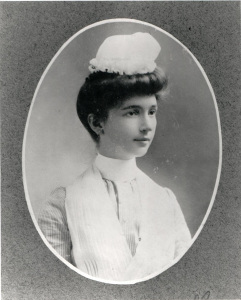
After she graduated from college, Margaret taught at a high school in New Jersey before returning home to care for her mother who was dying of tuberculosis. Margaret herself also caught the disease, and had frequent relapses over the following years. After her mother’s death, Margaret decided to become a nurse and moved to White Plains to train. She was close to completing her training in 1902 when she met and married a German-born architect named William Sanger. She put her studies on hold then to begin raising a family of her own with him in the suburbs of New York city. They had three children (two sons and a daughter) before a fire burned down their home, and forced them to move to downtown New York. Work was harder to come by, especially as William had abandoned architecture for painting. So to make ends meet Margaret went back to working as a nurse.
Both of the Sangers were politically active, a common interest which had drawn them together. And there were few places in America more alive with political discourse at the time than downtown New York. William’s artistic aspirations drew them into the Greenwich Village artistic community, while Margaret’s work as a visiting nurse left her in no doubt of the unfair treatment of the American poor. She joined the New York Socialist Party, and took part in several of their strikes and demonstrations. It was through her work, though, that she saw a much more concrete way she could help the poor.
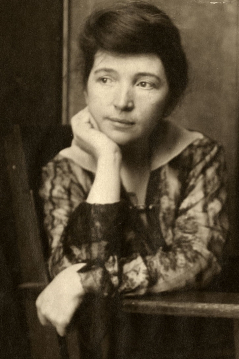
At the time both contraception and abortion were illegal, and so it was all too common for Margaret to see woman (like her mother) with their health broken by pregnancy after pregnancy. Also too common were cases like the one that proved to be the final straw, the sad story of Sadie Sacks. [1] She was a Russian woman of 28 who Margaret was called to see in July of 1912. Sadie had become pregnant and with her family unable to afford another child she had caused herself to miscarry. However that had resulted in an infection – deadly dangerous in those pre-antibiotic times. It took three weeks of work before they were able to save her. As they left Sadie asked them how she could prevent another pregnancy, and the doctor joked that her husband should sleep on the roof. The despair in the woman’s eyes haunted Margaret, especially when three months later they were called back to the same address. This time Sadie could not be saved, and died within ten minutes of their arrival. In Margaret’s own words:
I went to bed, knowing that no matter what it might cost, I was finished with palliatives and superficial cures; I was resolved to seek out the root of the evil, to do something to change the destiny of mothers whose miseries were vast as the sky.
What Margaret did was quit her job and then set out to unapologetically break the law. She had been writing for the socialist newspaper the New York Call for some time – for example, she wrote an article lamenting the lack of socialist feminism in many suffragette movements. Now she began writing for them full-time, producing a regular column called What Every Mother Should Know. This was a no-nonsense, medically frank discussion of sexual health and contraception, or at least what was available at the time. This was soon followed by What Every Girl Should Know, aimed (even more scandalously) at unmarried women. Both provoked a great deal of complaints, but also a great deal of praise. Many were aware of the aching need for the type of work Margaret was doing, though none had been willing to step up and provide it. For Margaret, her efforts were directly linked to her socialism and her desire to improve the lives of the poor.

Margaret and William separated in 1913 when he moved to Paris to work on his painting career. (He may have made this decision when he found out she was having an affair with a Greek anarchist named John Rompapas.) [2] In his absence she began to veer into even more left-wing territory, becoming friends with many female anarchists. In 1914 she started her own newsletter called The Woman Rebel, with the slogan “No Gods, No Masters” – a Nietzche quote that had been used by strikers she had marched alongside in 1912. In this case it referred to the radical notion of women owning their own bodies. [3] At the time women had no legal right to refuse their husband’s sexual advances, [4] something which had a huge impact on contraception. Margaret rightly pointed out the insanity of this view, declaring that a woman should be “the absolute mistress of her own body”. It was also in the pages of The Woman Rebel that she began using the phrase “birth control”, coined by her friend Otto Bobsein. Margaret embraced it as she was sick of the euphemisms she had been forced to employ up until that point. Along similar lines, she was deliberately pushing the envelope on what she knew the authorities would let her get away with. In fact, she was working on an even more graphic and informative pamphlet named Family Limitation in 1914 when she found out that she had been indicted for sending obscene materials through the post. This was not the legal battle she had wanted to fight, as she had hoped to make her trial a First Amendment issue. So rather than face the courts, she fled into exile in Europe under the alias of “Bertha Watson”.
Margaret spent 1914 in Europe, making contact with like-minded English socialists and beginning to show her genius for organisation. There she laid the grounds of many life-long friendships, and fell in love with the country that she would visit many times in the years to come. [5] One of the people she met was a scientist named Marie Stopes, who was considered one of Britain’s leading experts on coal formation. She was inspired by Margaret’s lectures to the Fabian Society, and got Margaret to test read a book she was writing about sexual health for married woman. [6] Margaret also visited Holland, where she learned about new forms of birth control – most notably the diaphragm. Meanwhile, back in America her husband managed to provoke the type of lawsuit that she’d tried to attract by giving a copy of Family Limitation to a conservative politician. He was convicted and spent thirty days in prison. Inspired by this, Margaret decided to return to New York to face the charges against her. Then tragedy struck in November 1915 when five year old Peggy Sanger fell ill and died suddenly of pneumonia. Out of compassion (and afraid of public backlash), the authorities dropped the charges.
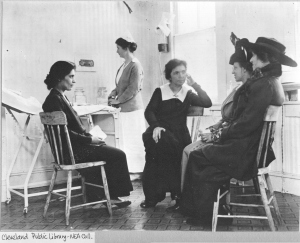
In 1916 Margaret’s columns from the New York Call were published as books. Later that same year, with the help of her sister Ethel Byrne (also a nurse) and an artist named Fania Mindell she opened America’s first ever birth control clinic in Brownville, New York. It was only nine days later that the police came and arrested her. Margaret posted her bail of $500, and then went straight back to work at the clinic. Once again she was arrested, and this time Ethel and Fania were arrested alongside her. New York state law made it illegal to distribute contraceptives at the time, which was the grounds for the arrest. The three women deliberately made their arrest as much of a scene as possible in order to ensure publicity. They had known this was inevitable, and now their real fight began.
Ethel was the first to stand trial and was convicted to thirty days imprisonment in January 1917. Borrowing a tactic from the English suffragettes, Ethel staged a hunger strike. And like them, she was brutally force-fed by the authorities. Still, the unprecedented move drew a great deal of press attention. Which was, of course, the point. Margaret then commandeered her own trial and used it to shift the narrative of birth control from “moral issue” to “social issue”. Twenty five Brownville women testified on the stand in her defense, each giving their own story of the horrors of endless childbirth in the poor environment. Many of their stories were considered too graphic to repeat in the “respectable” newspapers, but plenty were willing to print them. Despite this, it was clear Margaret had broken the law as written. Refusing a plea bargain that included a pledge to obey the law, Margaret was also sentenced to thirty days in prison. She appealed, and though she lost the appeal she did win one vital concession from the court in further proceedings in 1918. They decided that while Margaret was not qualified to dispense contraceptives, the law against them was not absolute. In theory a doctor could prescribe them where they felt a woman’s life would be put at risk by a pregnancy. It was a major victory, and it opened the door for true birth control clinics in the city.
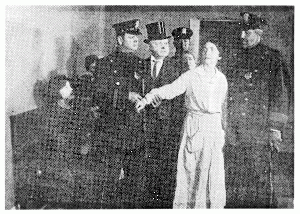
With female doctors now free to prescribe contraception, Margaret didn’t rest on her laurels. In February of 1917, after her release from prison, she had begun publishing a new magazine called “Birth Control Review”. This time, though, she had broader aims in minds than just distributing information or provoking a response from the authorities. This time, she intended to start a movement – and she did. She even made a movie – a silent short, advertised under the names of Birth Control and New World, dramatising the Brownville raid and trial. (The film had the distinction of being the first one made by a woman to be banned in the United States, before it had even been screened.) She traveled the country on a lecture tour, setting up birth control movements across the country. In 1921, in order to coordinate these movements and act on a national scale, she founded the American Birth Control League. Their mission statement was:
We hold that children should be:
(1) Conceived in love;
(2) Born of the mother’s conscious desire;
(3) And only begotten under conditions which render possible the heritage of health.
Therefore we hold that every woman must possess the power and freedom to prevent conception except when these conditions can be satisfied.
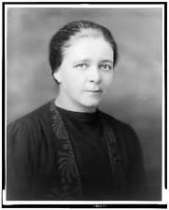
In 1923 the ABCL opened the first fully legal birth control clinic in American history – the Clinical Research Bureau. In 1925 Margaret asked Doctor Hannah Mayer Stone to become the head physician at the clinic. Hannah was just as passionate about birth control as Margaret, and channeled that passion into research and into caring for her patients. The clinic was raided in 1929 by the NYPD, but the respect Hannah and her staff had gained for their work turned the raid into a huge public relations win for the clinic, as many public organisations spoke out on her behalf. The biggest win from the raid was that it brought the medical establishment of New York fully behind the clinic. Even those among them who didn’t support birth control were scandalised at how the police had treated Hannah, and how they seized patient medical records. The charges were dropped, and Hannah and her staff were able to work on unmolested. In her writing Margaret makes no secret of her deep respect for Hannah’s talent and compassion. It was that respect that would later lead her to ask Hannah to help her make history once again. But the other half of that story began on the opposite side of the Pacific Ocean, in Japan.
Margaret made her first trip to Japan in 1922, as part of a tour that also took in China and Korea. While she would use her influence to help efforts in all three countries, Japan in particular took her attention. She would return to the country several times in the following decades working with local feminists to help promote birth control. Back in America, she also continued her work to make birth control available to poor women, ironically by reaching out to middle and upper class women. By this point a lot of her efforts were beginning to turn towards national legalisation of contraception. She wasn’t single-minded in pursuing this goal though – when a black social worker named James Hubert asked her to open a clinic in Harlem, Margaret was only too happy to oblige. Margaret was herself fervently anti-racist, and had always cracked down hard on any bigotry in her staff, but she knew that few black women would feel comfortable going to the CRB. Similarly, she was aware of the poor optics of a group of white women swooping down into Harlem to be enlightened at people (as well as the potential for her opponents to claim that this was a conspiracy to reduce the black population) and so she made sure to staff the clinic with black doctors, and to recruit black ministers to act as its spokespeople. She was well aware that they needed to have their own agency in this matter. [9]
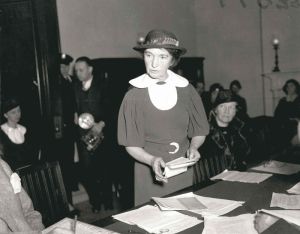
It’s at this point that we have to address the elephant in the room whenever interbellum birth control movements are discussed – eugenics. As soon as advances in science had made people aware of genetic inheritance, they had begun to think about how to manipulate it. This set of beliefs and general ideology became known as “eugenics”. With the usual inability of most people to appreciate scale and their own insignificance (in this case, the sheer amount of time evolution takes to have an impact), many would-be utopians had visions of creating Homo Superior through the elimination of what they considered Homo Inferior. Many in the birth control movement also had the idea that the “stock” of humanity would be improved if the “inferior” types didn’t reproduce. Margaret didn’t share those beliefs, but she did believe that those unable to support children, whether financially or mentally, shouldn’t have them – and she did support the morally dubious official US government policy of sterilising those deemed mentally incompetent. The one key difference between the ABCL (including Margaret) and the eugenic idealists, however, was that they believed in state control over reproduction, while the ABCL’s ideology was firmly rooted in the idea of personal choice. Thus she avoided their dangerously naive assumptions about the benevolence of the state – a naivete that would be brutally exposed by the eugenics-rooted excesses of the Third Reich. In fact Margaret’s books were among those burned by the Nazis in their attempt to stamp out any truth that didn’t match their ideology.
By 1932, Margaret was ready for one final battle in the courts. For the previous three years she and the National Committee on Federal Legislation for Birth Control had been lobbying in Washington to get the 19th century obscenity laws that made obtaining contraceptives illegal, but this had been unsuccessful. Though the doctors in her clinics were allowed to prescribe contraceptives, they had to obtain them through less than legal means. (One such was through the agency of Margaret’s second husband, Noah Slee, who smuggled them in from Canada.) At Margaret’s request, Doctor Hannah Stone ordered a packet of pessaries (a type of diaphragm) from one of Margaret’s contacts in Japan. They were openly labeled as such and declared on the customs form, and so were immediately seized upon arrival in New York. Hannah protested and the case went to court as United States v. One Package of Japanese Pessaries. Fortunately public opinion had shifted far enough that the case was able to get a fair hearing, and so it went in favour of the contraceptives. The government appealed and lost, with the appeals court pointing out the hypocrisy of the government permitting abortion if the mother’s life was at risk, but not permitting her to prevent getting pregnant in the first place.

The victory was not only a huge step towards eventual full legalisation, but it also brought Margaret and the CRB back into partnership with the ABCL. Margaret had split from the organisation in the 1920s, over a combination of their distaste for her radical politics and her frustration with their cosy liberalism. However with legalised birth control on the horizon they decided to merge the two back together again and form the Birth Control Federation of America in 1939. Margaret Sanger was the first president, but her effective power was much diluted from what it had been in the early days. This can be seen clearly in the 1942 decision to rename the organisation as “Planned Parenthood”, a move Margaret vigorously opposed as she hated the euphemistic nature of the name. In line with this drive towards “respectability”, most of her radical feminist ideals were gradually stripped out of the organisation.
Despite this, though, Margaret stayed as president of Planned Parenthood. The wholescale distribution of contraceptives (to prevent STDs) to soldiers during World War II and the post-war “baby boom” both made contraception now not just respectable but also largely accepted as a fundamental right. It wouldn’t be until 1965 that the prohibition of birth control was declared unconstitutional, and it wasn’t until 1970 that the obscenity laws that had led to both of Margaret’s court cases were removed, but by the end of the 1940s Margaret Sanger had won in all but the formalities. Her health was beginning to fail her, but she continued to fight – now on behalf of the women she had seen around the world during her travels. In 1952 she attended the historic Third International Birth Control Conference, held in Mumbai. This led to the foundation of the International Planned Parenthood Federation, and Margaret Sanger was elected the Federation’s first president. It was a worthy recognition of a life spent in service of the cause.
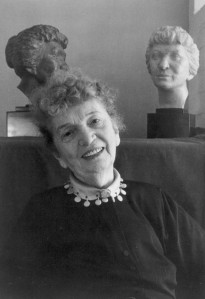
Margaret’s last major contribution to the birth control movement was in arranging funding for research into hormonal birth control, which eventually led to “the pill” first reaching the market in 1960. Shortly after that, in 1962, ill health led Margaret to retire from her position as president of Planned Parenthood. In 1966 she died of congestive heart failure. She was one of those rare people who were perceptive enough to see the world not just as it was but as it should be, lucky enough to be in a position to do something about it, and determined enough to see it through to the end. She had envisioned a world where women would no longer be forced to bear children they could not support, and she helped to build that world with her own two hands. Nowadays she’s often attacked, usually by foes of the organisation she founded who seek to tarnish it by association. Her words are twisted and misconstrued, her motivations slandered. But her actions, and the better world she left behind, are all the vindication she needs.
Images via the Sanger Papers.
[1] Often spelled as Sachs. A lot of people theorized that Sadie might have been a composite character created by Margaret to make a good story, however researchers at NYU managed to find the family as described by Margaret in the 1910 census.
[2] Margaret had an extremely healthy sex life, especially by the standards of the era. She was also notable for being very good at managing breakups, and usually earned the lifelong loyalty of her ex-lovers rather than jealousy.
[3] Something more than a few throwbacks in the modern world still have trouble with.
[4] Marital rape wouldn’t be a crime in most of America until 1970, and it remained legal in some states up into the 1990s.
[5] It was on one of these visits in 1920 that she began an on-again, off-again affair with HG Wells.
[6] Marie Stopes would go on to found the British equivalent of Planned Parenthood, though the creation of the NHS left it with a much smaller set of needs to fill.
[7] Not to be confused with the National Birth Control League, an organisation that was around from 1915-1919 and which had mostly acted as a lobbying group.
[8] The comics creator William Marston, who dated the daughter of Margaret’s sister Ethel Byrne, in part based the character of Wonder Woman on Margaret and her writings.
[9] None of these facts stop those who object to modern-day Planned Parenthood from cherry-picking from Margaret’s writings in order to push a false revisionist narrative.
